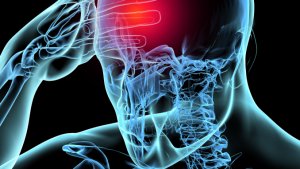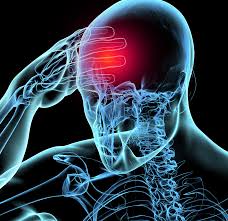
Concussions in Combat Sports
By Carmen Bott
Interview by Coach Carmen Bott
Answers by Conor Collins, RMT
All athletes will benefit from an entire care team. I call this a ‘pit crew.’ Each member of the team serves a role in athlete development and care. On my team, I have sport psychology, therapy and nutrition. We all have the same intake files on each athlete we see and add to the file as we see fit. This can only help and athlete. Everyone must work together and must share information. Today, I have the privilege of talking with Conor Collins about concussions in combat sports and .
 Coach Bott: Tell me about your background as a Therapist. Specifically, how do you help athletes recover from concussions?
Coach Bott: Tell me about your background as a Therapist. Specifically, how do you help athletes recover from concussions?
Conor: My name is Conor. I am a Massage Therapist, Sports Injury Therapist and Acupuncture practitioner with a clinical practice outside of Toronto, Ontario, Canada. My practice is focused on sports injuries with a special interest in concussion, post-concussion syndrome and persistent post-concussive symptoms.
I help athletes recover from concussion through a thorough assessment process following a head injury. While determining whether an athlete has a concussion is crucial, it is equally as important to determine when an athlete does not have a concussion.
Following an acute injury, an athlete history is taken which includes concussion history as well as any other factors that may lead to a potential drawn-out prognosis. This includes (but is not isolated to) the number of prior concussions suffered, a history of anxiety, depression or other mood disorders and history of learning difficulties. We also review a history of headaches and sleep disturbances.
Following a health history, a thorough neurological exam is performed and then a more focal concussion examine is performed which includes tools to assess dizziness, vertigo, the nervous system, the vestibular (balance system) and the oculomotor system, or how the eyes and brain communicate in terms of visual-spatial recognition.
During the assessment athlete symptoms typically trend more towards one concussion subtype. From there a rehabilitation program is built, modified and progressed for each individual athlete. Programs are not cookie cutter and vary weekly, if not daily. Programs always include heart rate guided cardiovascular exercise due to the mounting evidence on its benefit in post-concussion populations.
Symptoms are monitored throughout the program until athletes are symptom-free. At that time athletes are returned to the overseeing physician to be returned to sport. Time frames for return to sport vary from athlete to athlete.
 Coach Bott: “Are there better screening practices than others?”
Coach Bott: “Are there better screening practices than others?”
Conor: Yes, the most popularly marketed screening tools are baseline neurocognitive testing tools such as the ImPACT test. While these tools offer valuable information there is much debate as to whether or not baseline neurocognitive testing is useful in sport. Furthermore, it’s utility in the average multidisciplinary clinic may not offer value as many practitioners, including myself, are unable to interpret and direct test results with the same clinical expertise as a neuropsychiatrist. If neurocognitive testing is being used as a screening tool, I am of the opinion this process should be overseen by a neuropsychiatrist or psychologist.
There are other pre-season screening practices that are used which include reaction time testing, the King-Devick test and mBESS test to name a few. These tests give an overall picture of how the nervous system is functioning pre-injury. Again, there is a lot of controversy as to the validity of these tests, in terms of whether or not they can accurately detect a concussion in athletes either pre-season or post-injury.
Personally, I use near point convergence as one of my primary screens. Convergence is the ability of the brain to move the eyes towards the nose as an object approaches it. Failure to do so results in the athlete seeing double (diplopia). A normal near point convergence measurement is between 4-6cm. Measurements outside of this range may catch an underlying issue with the eyes, or persistent symptoms from a prior concussion that the athlete may not be reporting. Athletes with a convergence insufficiency following head injury generally have a longer prognosis for recovery. Near point convergence allows therapists to compare post-injury measures against baseline and provides objective data on whether or not the athlete is improving. While we know a convergence insufficiency will spontaneously resolve in the majority of concussions, catching those that do not allow us to accurately implement (or refer out for) ocular rehab.
One thing is clear is that there is not one screening concussion tool that will give you the entire picture of an athlete. The more information you have about the athlete prior to the injury in terms of both health history and objective testing the better picture you will have to compare to moving forward.
 Coach Bott: “Are there risk factors or red flags athletes need to be more aware of?”
Coach Bott: “Are there risk factors or red flags athletes need to be more aware of?”
Conor: Yes, firstly you do not need to lose consciousness to sustain a concussion.
Secondly, you do not need to hit your head to sustain a concussion. Concussions are caused by the brain moving inside the skull. This can occur from a blow to the head, or a whiplash-type injury to the neck or trunk, which causes the brain to move rapidly within the skull.
There is some evidence that females suffer concussions more than males. There is also evidence to support that a history of concussions may lead to a drawn-out recovery in subsequent head injuries. There seems to be something about 3 concussions that lead to an increased risk of long term complications however this is not entirely clear in the literature. As cited earlier a history of mood disorder and/or learning disability can often lead to drawn out recovery.
Symptoms of acute concussion include (but are not isolated to) headache, nausea, double vision, dizziness, and confusion. If you have lost consciousness a concussion has been sustained and the athlete is to be removed from play. The idea of having your “bell rung” is part of sports culture, more often than not the athlete will have sustained a concussion and continues to play. This point is particularly important when discussing second impact syndrome. Second impact syndrome is death due to a subsequent hit to the head following an acute concussion.
Cases of second impact syndrome are almost solely reported in persons below the age of 18. For this reason, it is important to adopt a “when in doubt, sit them out” policy in youth sports and continue to educate young athletes on the importance of self-reporting symptoms.
Hits to the head may also cause more significant injuries outside of concussions including bleeding in the brain, fracture, and spinal cord injury. If these injuries are suspected the athlete should be left in place, while the paramedics are called. While some athletes may vomit following a head injury excessive repeated vomiting is a red flag. Any further declines in the athlete’s ability to orient themselves to time or place as well as motor function should also be taken very seriously.
 Coach Bott: “Are concussion more prevalent or are they being detected /diagnosed much better?”
Coach Bott: “Are concussion more prevalent or are they being detected /diagnosed much better?”
Conor: Good question. I think they are being detected more accurately and with emerging awareness and education being discussed more, the public is more aware of the impact concussions play inside and outside of sport.
There are still areas of concern in my opinion. First, is athlete under reporting. We do know there is still a relatively large percentage of athletes that under report concussion in fear of losing their place on a team. This may also be perpetuated by coaching and sports culture. Coaches should create an open-door policy and encourage the health and well-being of their athletes first. Creating an environment of “playing through pain” and telling athletes to “toughen up” will decrease the number of athletes that report concussions and put athletes at risk.
Secondly, there are conditions that are being mis classified as a concussion. This is particularly true for athletes that may have suffered a concussion in the past. As concussion symptoms are often ambiguous, many of their symptoms fall under the classifications of other injuries and/or diseases.
This again only brings about the importance of having as much subjective and objective data on the patient at the time the injury is suffered. If there is any doubt about whether the athlete is concussed, the athlete should be removed from play and re-evaluated either the next day and/or by another practitioner to get a second opinion.
One thing is very clear, an athlete is NEVER to be returned to play on the same day when a concussion is suspected.
 Conor is in his 12th year of manual therapy and movement education. As both a massage therapist and sports injury therapist, Conor provides a unique approach to clinical practice combining disciplines of manual therapy integrated with movement-based rehabilitation strategies.
Conor is in his 12th year of manual therapy and movement education. As both a massage therapist and sports injury therapist, Conor provides a unique approach to clinical practice combining disciplines of manual therapy integrated with movement-based rehabilitation strategies.
With over a decade of taping experience, Conor applies new concepts of movement based taping with traditional athletic taping protocols. Outside of clinical practice, Conor instructs upcoming manual therapists at the college level.
During his career, he has also had the pleasure of managing athletes and consulting for national level and club teams in both the NHL and NCAA. Conor shares a special clinical interest in concussion management and has spent many years treating endurance triathletes and runners.
Stay in Touch with Conor:
Web - www.conorpcollins.com
IG - @conorpaulcollins
FB - www.facebook.com/cpcollins





